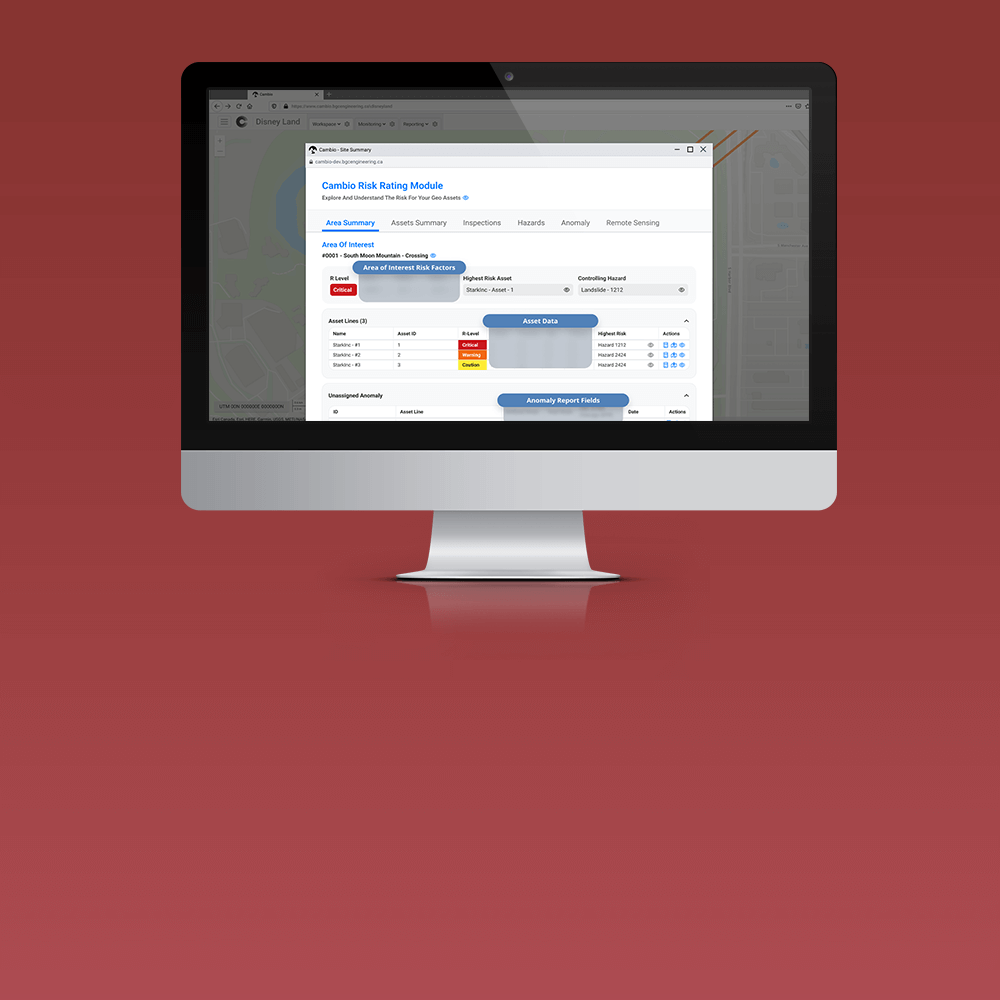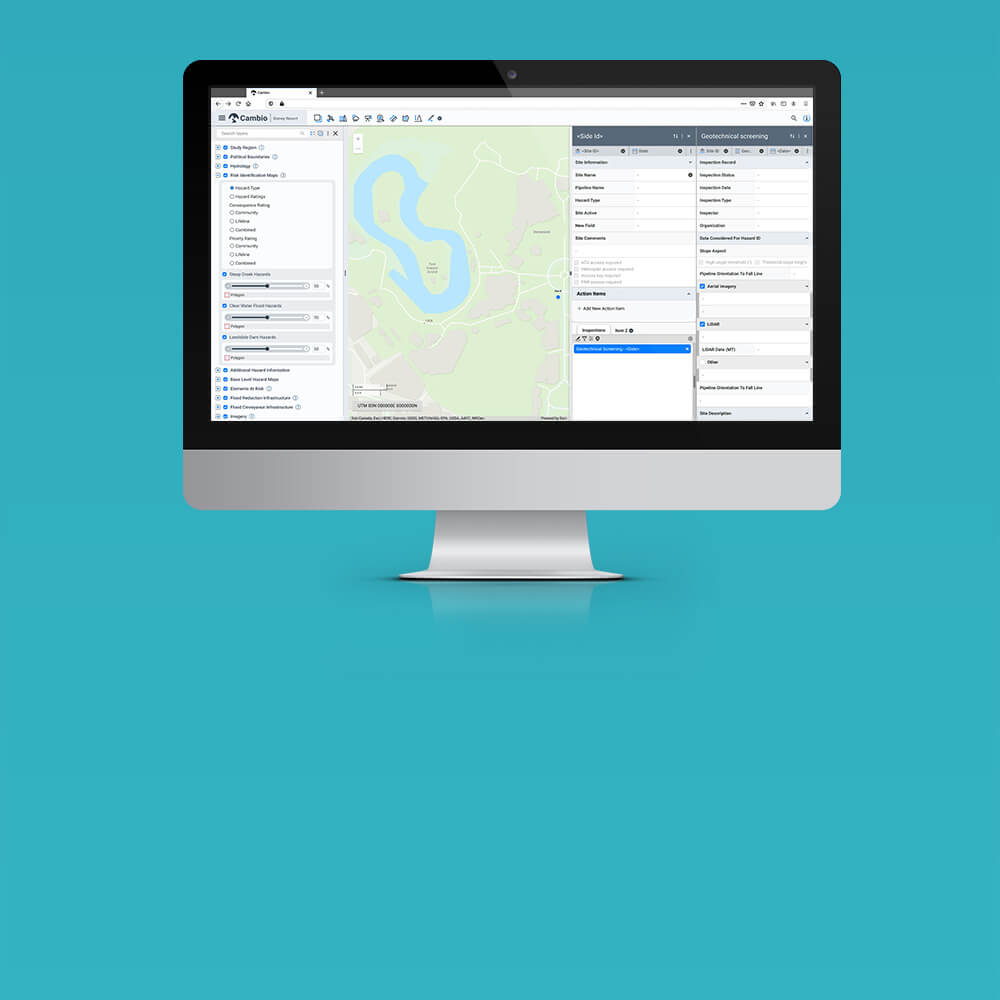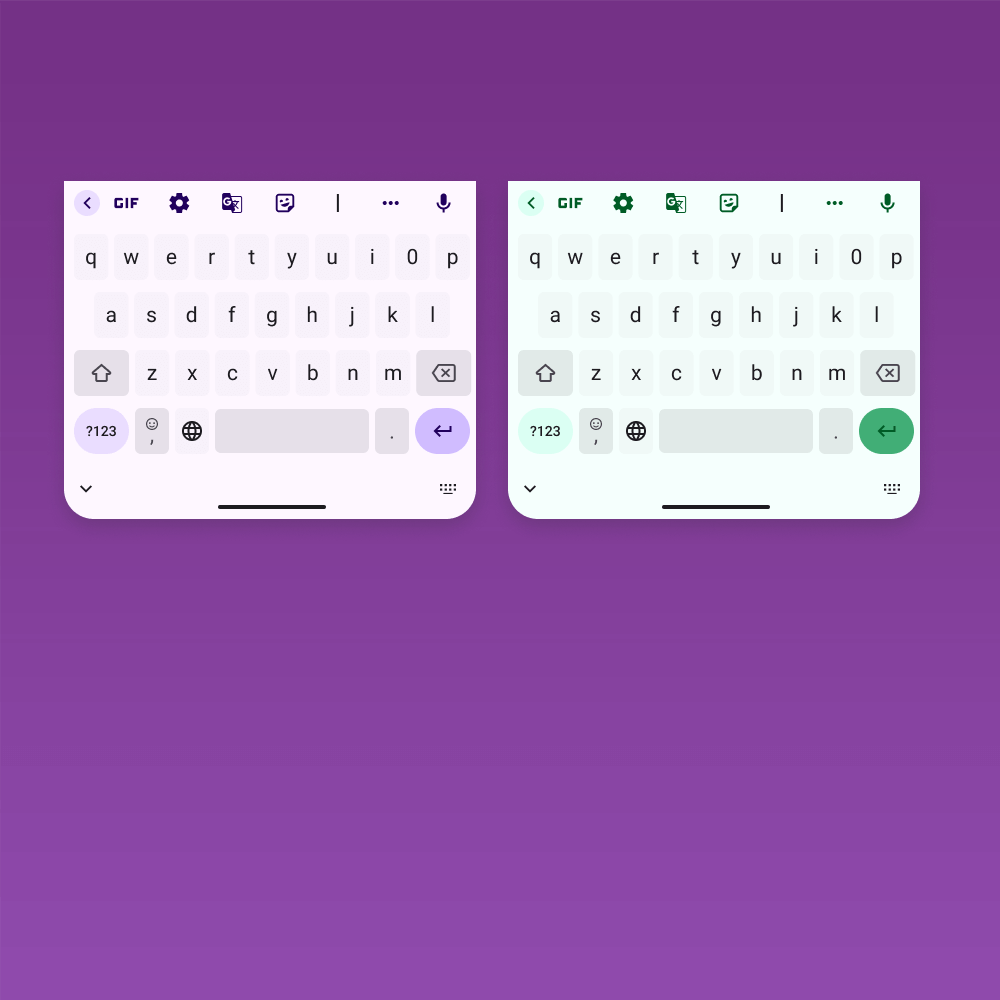Some details in this design project breakdown and designs have been omitted or modified to remove and protect client data/intellectual property.
Project Description
The Cambio software is essential for inspecting and managing geo assets, such as dams, pipelines, railways, and highways. A crucial aspect of these inspections is making recommendations for next steps, ranging from minor mitigations to large-scale repairs. However, the previous recommendation system had several limitations, which led to inefficiencies and low adoption across different users and clients.
Key Challenges and Pain Points
New Action Tracking Feature
The old inspection recommendation section was non-intuitive, resulting in low user adoption. The new action tracking feature enhances visibility and usability, allowing users to quickly find and manage next steps across client operations. This redesign not only improves workflow efficiency but also sets the stage for future expansions in action tracking.
Action Tracking Form
Creating a new action launches the Action Form.
Design Process and Stakeholder Collaboration
Outcome and Success Metrics
Action Tracking Tagging System
Two major pain points with the old recommendations feature were the challenges of navigating long dropdown menus and the difficulty in managing and maintaining these dropdowns across clients and industries. Each client required the recommendations section to be tailored to their specific workflows.
To address this, I designed an autofill tagging system that allows users and clients to dynamically create and manage custom tags for action tracking. As users type, the system filters the dropdown based on existing tags, and if the tag doesn’t exist, authorized users can create new ones. These tags are then filterable in dashboards and data tables, enabling quick creation of custom views.
This tagging system provides flexibility for a wide range of unique use cases, allowing clients to customize action tracking down to individual user levels. It also simplifies maintenance for the Cambio software team, with the feature eventually rolling out across various functions, including an image tagging system.
UX Artifacts
As part of the research and design phases, we mapped out the full product design roadmap for action tracking, which included requested features like bulk action creation. This process involved creating multiple user and task flow documents to ensure the system could meet diverse client needs and scale effectively.
Future Steps
My Role
As the lead product designer, I was responsible for the UX research and desig for the upgraded recommendations feature, transforming it into phase one of a comprehensive action tracking system. I conducted user interviews and testing to gather insights from key stakeholders, including inspectors, engineers, and safety managers, ensuring the feature addressed their pain points. I led the design process by creating wireframes, prototypes, and user flow documents, while also mapping out the product design roadmap for future iterations. Additionally, I collaborated closely with developers and stakeholders, providing design handoffs and supporting the implementation of the dashboard to ensure a smooth transition from concept to product delivery.
Tools Used
Action Tracking Dashboard
The new action tracking dashboard was designed to streamline project management by consolidating recommendations and actions in a single, easy-to-navigate interface. It allows users to track progress, prioritize tasks, and filter data with custom tags, providing clear visibility into ongoing and completed actions. This dashboard enables clients to manage workflows efficiently across teams and industries, significantly improving coordination and decision-making.



